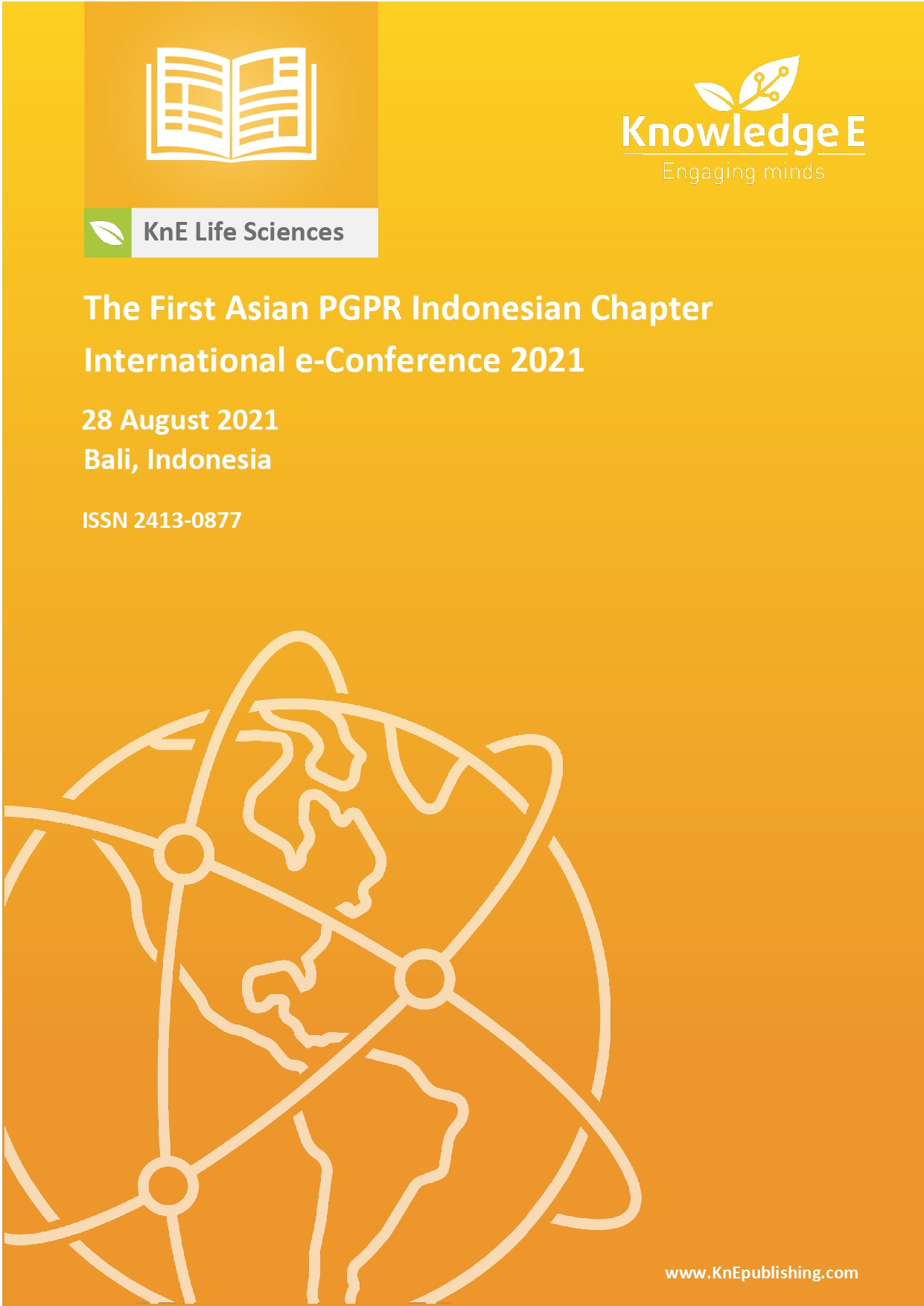Agroforestry to Support Trees and Protect Against Air Pollution: A Review
DOI:
https://doi.org/10.18502/kls.v7i3.11104Abstract
The high rate of land conversion may jeopardize natural resources vital to Balinese culture, as well as the forest’s ability to maintain a healthy environment. Agroforestry is thought to have a significant environmental benefit in terms of reducing air pollution and respiratory diseases. This research aimed to find a solution to reduce air pollution that is harmful to people’s health. Relevant articles were found by searching through databases such as Google Scholar, Research Gate, Wiley Online Library, and others. According to the findings, respiratory diseases have been increasing and these have been linked to rising air pollution, implying that air pollution facilitates viral infections. Forest cover should be increased to help reduce air pollution caused by fossil fuel combustion from road traffic. It is proposed that increasing the production of tolerant crops in mixed culture with trees can help to maintain tree cover. Agroforestry is becoming an important complement to the native forest in terms of protecting people from air pollution and respiratory disease.
Keywords: agroforestry, tree protection against air pollution, land conversion, deforestation
References
Akatsu M. The problem of air pollution during the industrial revolution. Monograph Series of the Socio-Economic History Society, Japan. Sugiyama S, editor. Tokyo: Springer; 2015.
Chauhan A, Johnston S. Air pollution and infection in respiratory illness. British Medical Bulletin. 2003;68:95–112. https://doi.org/10.1093/bmb/ldg022
Ueda M. The history of ecological environment: Ideas derived from Chinese research. Monograph Series of the Socio-Economic History Society, Japan. Sugiyama S, editor. Tokyo: Springer; 2015.
Cirman A, Domadenik P, Intriago R. The Kyoto protocol in a global perspective. Economic and Business Review. 2009;11(1):29–54.
Zanke A, Thenge R, Adhao S. COVID-19: A pandemic declare by World Health Organization. IP International Journal of Comprehensive and Advanced Pharmacology 2020;5(2):49–57. https://doi.org/10.18231/j.ijcaap.2020.012
Peters A, Dockery D, Heinrich J, Wichmann H. Short-term effects of particulate air pollution on respiratory morbidity in asthmatic children. European Respiratory Journal 1997;10(4):872–879. https://doi.org/10.1183/09031936.97.10040872
Peel J, Tolbert PE, Klein M. et al. Ambient air pollution and respiratory emergency department visits. Epidemiology. 2005;16(2):164–174. https://doi.org/10.1097/01.ede.0000152905.42113.db
Gehring U, Cyrys J, Sedlmein G. et al. Traffic-related air pollution and respiratory health during the first 2 yrs of life. European Respiratory Journal 2002;19(4):690– 698. https://doi.org/10.1183/09031936.02.01182001
Dhand R, Li J. Coughs and sneezes: Their role in transmission of respiratory viral infections, including SARS-CoV-2. American Journal of Respiratory and Critical Care Medicine. 2020;202(5):651–659. https://doi.org/10.1164/rccm.202004-1263PP
Gandhi M, Marr L. Commentary uniting infectious disease and physical science principles on the importance of face masks for. Med (N Y). 2021;2(1):29–32. https://doi.org/10.1016/j.medj.2020.12.008
Cascetta E, Henke I, Francesco L. The effects of air pollution, sea exposure and altitude on Covid-19 hospitalization rates in Italy. International Journal of Environmental Research and Public Health 2021;18(452):1–11.
Bourdrel T, Annesi-Maesano I, Alahmad B, Maesano C, Bind M. The impact of outdoor air pollution on Covid-19: A review of evidence from in vitro, animal, and human studies. European Respiratory Review 2021;30:1–18. https://doi.org/10.1183/16000617.0242-2020
Holden A. Environment and tourism. London: Routledge; 2000.
Picard M. Cultural heritage and tourist capital: Cultural tourism in Bali. International Tourism: Identity and Change. JA, Lanfant MF, editors. London: Sage; 1995.
Saenz-de-Miera O, Rosselló J. Modeling tourism impacts on air pollution: The case study of PM10 in Mallorca. Tourism Management 2014;40:273–281. https://doi.org/10.1016/j.tourman.2013.06.012
Kreuzwieser J, Gessler A. Global climate change and tree nutrition: Influence of water availability. Tree Physiology 2010;30(9):1221–1234. https://doi.org/10.1093/treephys/tpq055
Franks P, Leitch I, Ruszala E, Hetherington A, Beerling D. Physiological framework for adaptation of stomata to CO2 from glacial to future concentrations. Philosophical Transactions of The Royal Society B Biological Sciences 2012;367(1588):537–546. https://doi.org/10.1098/rstb.2011.0270
Rindy J, Ponette-González A, Barrett T, Sheesley R, Weathers K. Urban trees are sinks for soot: Elemental carbon accumulation by two widespread oak species. Environmental Science & Technology 2019;53(17):10092–10101. https://doi.org/10.1021/acs.est.9b02844
Perera F. Pollution from fossil-fuel combustion is the leading environmental threat to global pediatric health and equity: Solutions exist. International Journal of Environmental Research and Public Health 2018;15(16): 1-17. https://doi.org/10.3390/ijerph15010016
García de Jalón S, Burgess PJ, Curiel Yuste J. et al. Dry deposition of air pollutants on trees at regional scale: A case study in the Basque Country. Agricultural and Forest Meteorology 2019;278(107648):1–17. https://doi.org/10.1016/j.agrformet.2019.107648
Selmi W, Weber C, Rivière E, Blond N, Mehdi L, Nowak D. Air pollution removal by trees in public green spaces in Strasbourg city, France. Urban For. Urban Green. 2016;17(2):192–201. https://doi.org/10.1016/j.ufug.2016.04.010
Nowak DJ. Chicago’s urban forest ecosystem: Urban forest climate project. McPherson RA, Gregory E, Nowak DJ, editors. Pennsylvania: Northeastern Forest Experiment Station; 1994.
Sing S, Verma A. Environmental bioremediation technology. Singh S, Tripathi R, editors. Berlin: Springer-Verlag Berlin Heidelberg; 2007.
Borelli S, Simelton E, Aggarwal S, et al. Agroforestry and tenure. Food and Agriculture Organization of The United Nations, International Centre for Research in Agroforestry. Vol. 8. 2019. Rome.
Food and Agriculture Organization of the United Nations, UN Environment Programme. The state of the world’s forests. Rome: UNEP; 2020.
Watteyn C, Fremout T, Karremans AP. et al. Vanilla distribution modeling for conservation and sustainable cultivation in a joint land sparing/sharing concept. Ecosphere. 2020;11(3). 1-18. https://doi.org/10.1002/ecs2.3056

